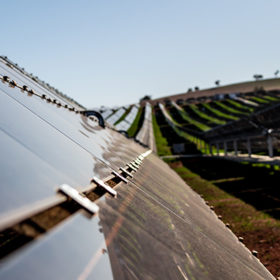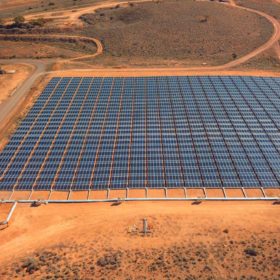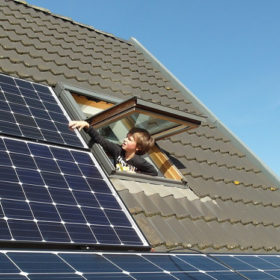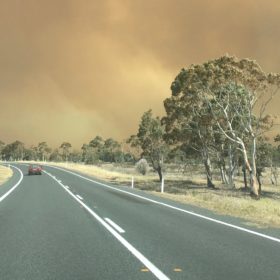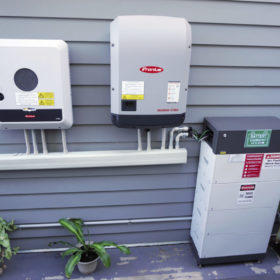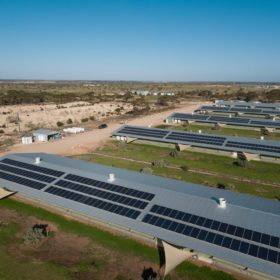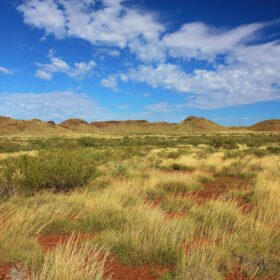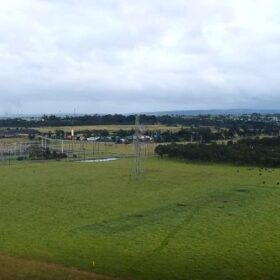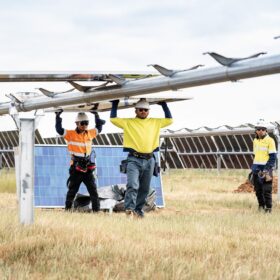Beryl and Manildra Solar Farms up for sale as investor exits Oz
New Energy Solar is an investment fund focused on helping investors benefit from a global shift to renewable energy. It’s selling its Australian solar assets because the climate isn’t right?
South Australia on the front foot with $240 million green hydrogen export project
The South Australian government has followed up the launch of its Hydrogen Export Prospectus last week with a straight drive on the front foot, $37 million in funding for export infrastructure upgrades in support of the a $240 million green hydrogen and green ammonia project which will make South Australia a global leader.
IEA report rubbishes Morrison’s gas-led energy plan
An International Energy Agency report led up by Rolf Frischknecht from Treeze in Switzerland and under the joint project management of the University of New South Wales’ José Bilbao has measured the lifecycle emissions of both residential solar PV with battery storage and gas-generated grid electricity. The results are not particularly surprising, only the Morrison Government’s ongoing obduracy is.
Climate Council says bushfire royal commission findings put solar+storage front and centre
Responding to the findings of the bushfire Royal Commission, the Climate Council have pointed to solar and battery solutions as integral to building a more disaster resilient and decarbonised Australia.
NT’s Home and Business Battery Scheme charging ahead
230 Northern Territory businesses have already received their vouchers for Australia’s most generous energy storage subsidity, the NT’s Home and Business Battery Scheme. The scheme, which is still open for applications until November 30, offers grants of $6,00 to homeowners and business owners to install solar and battery storage, or complement an existing solar system with a battery.
Terawatt scale by 2050
In a new paper published in the journal of Renewable and Sustainable Energy, renowned PV scientist Pierre Verlinden examines the solar industry’s trajectory towards the 70 TW of installed capacity that will be needed by 2050, as the best choice for meeting climate targets set out in the 2015 Paris agreement. Silver consumption and recycling, according to Verlinden, will be the biggest challenges in the years to come, as well as ensuring balanced growth and avoiding a major installation rush in the years close to 2050.
Winner, winner, chicken dinner! Australia’s largest poultry farm switches on solar plus energy storage system
Australia’s largest free-range chicken farm switched on one of the biggest solar plus energy storage system’s of any commercial farm in the country this week. With 1.4 MW of rooftop solar combining with 2.28 MWh of energy storage via 5 Tesla lithium-ion batteries, the farm is excited to save enormous amounts on its energy bill and its emissions. Winner, winner!
‘China must put EV battery reuse at heart of net-zero ambition’
The centralised nature of policymaking in Beijing would enable component standardisation to ease the transition from EV to stationary energy storage use, according to Greenpeace East Asia.
400,000 applications for STCs in 2020 — how the CER makes sense of a cornucopia of data
The Clean Energy Regulator is both watchdog — assessing applications for Small-scale Technology Certificates, Large-scale Generation Certificates and Emissions Reduction Fund credits — and oracle, weaving data to provide an overview of Australia’s energy supply and demand and the performance of renewable resources. A recent transformation of its digital capabilities benefits consumers and the renewable energy industry.
Weekend read: Singapore solar walks the talk
Earlier this year, Singapore surpassed its 2020 target for 350 MW of installed PV, and has set itself a more ambitious goal of 2 GW for the coming decade. pv magazine recently spoke with Thomas Reindl, deputy CEO of the Solar Energy Research Institute of Singapore (SERIS) – and also the lead author of a 2020 update to the institute’s PV Roadmap for Singapore report – to catch up on the latest developments in the city-state’s PV market.
